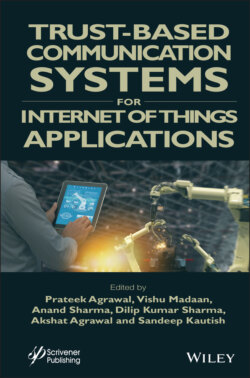Читать книгу Trust-Based Communication Systems for Internet of Things Applications - Группа авторов - Страница 34
На сайте Литреса книга снята с продажи.
3.4 Future-Cognitive Structures and IoT
ОглавлениеToday, and over the next few years, the IoT PC gadget is ready for spectacular development, but should something be said about modern, fresh, outof-the-box research near the precarious edge of computerization? What can be guaranteed after that and in what capacity is it going to rely on how the IoT is protected today? Intellectual systems and studies give us an essential perspective on the IoT of tomorrow [8].
Advanced transformation of detected brain impulses (using pneumoencephalography) allows intelligence prepared for interpretation to be conveyed by information transmission, IP networks, and indeed the Internet. As far as IoT is concerned, this form of psychological research suggests a future in which a few kinds of savvy devices are involved on the ground that an individual or any sort of cerebrum controls or accepts signs from via the BMI method. On the other hand, by assigning a sensor to it, the human mind is made hyper-mindful of sensors situated many kilometers away. Imagine a pilot running automation as if his body was rising, except there was no joystick for the pilot. Both simple flight movements and modifications can be made using just the key signals (controls) and input (feeling) forwarded from an interchange guide. Imagine the aircraft’s speed on the pilot’s BMI device in a computerized setting, as determined by its piton tube and the pilot’s “feeling” of the velocity rushing like wind over his shoulder [9]. The destiny of the IoT is not as far away as it may seem.
At present, in certain psychological situations where human brains and dynamic physical systems are involved, think what sort of safety IoT might require. For example, how could an individual confirm a human mind to a gadget or check the gadget back to the brain? What might foster trustworthiness misfortunes with the BMI? What would happen if timing and usefulness were parodied, killed, or controlled by active or approaching signs? When evaluating these potential structures and what they plan to achieve for humanity, the larger advantages of the existing IoT, as vast as they seem to be, are marginal. Risks and threats are exactly like that [10].
